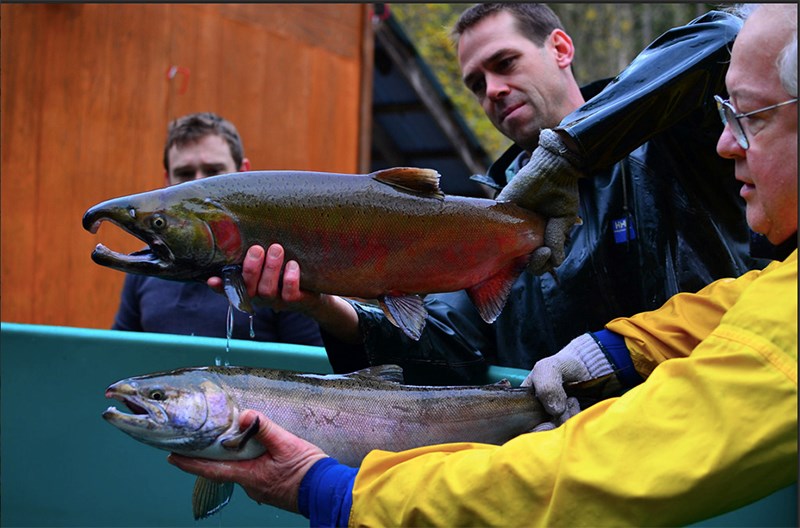Coquitlam River coho are returning to their spawning grounds in greater numbers than other species, raising questions about what happened to the chum, chinook, pinks and sockeye, whose numbers are down.
“Mother Nature isn’t just picking on us,” said Norm Fletcher, co-ordinator of the Port Coquitlam and District Hunting and Fishing Club's Grist Goesen Memorial Hatchery, who said salmon numbers are down and no one knows exactly why.
Fisheries and Oceans Canada won’t provide salmon numbers until December but Fletcher said it appears coho are having a “medium to strong” year, enabling volunteers to capture a number of females for eggs to raise in the hatchery.
“It’s looking better and better as things go on,” said Fletcher, who noted volunteers will continue to monitor the run through December and will likely collect a few more female salmon to “ripen” in tanks.
Still, he said it’s “small consolation” to have a good coho return when the other salmon species aren’t plentiful and all contribute to the health of the river.
“The decomposing carcasses all go to build the system and the Coquitlam River is one of the richest stream environments in the Lower Mainland, if not the richest.”
The biggest disappointment is the failure of any sockeye to return after a concerted effort to restore the run that was destroyed decades ago when the Coquitlam River dam was built, although the hatchery hasn’t given up, he said, and will continue work to bring back the run.
The lack of chum salmon is bit of a surprise because they typically do well, in part because they spend so little time in the river before heading out to sea and, therefore, aren’t as affected by development, spills and other problems.
Because so much of their lives are spent in the ocean, scientists have to look to the deep waters to find out what happened to B.C.’s Fraser fishery this year, Fletcher said.
“When the chum were in the tens of thousands, they were everywhere. You couldn’t get in the river without stepping on some in certain places.
"They were highly visible and they’re not this year,” he said, reflecting concerns raised by other Tri-City stream stewards who have said there are fewer chum than in previous years and the ones that returned this year reached their home creeks and streams later than usual.
He said it’s not known exactly what happened to the chum, telling The Tri-City News, “There are several species all got hit for reasons that a whole lot of people are doing a lot of searching to find.”



